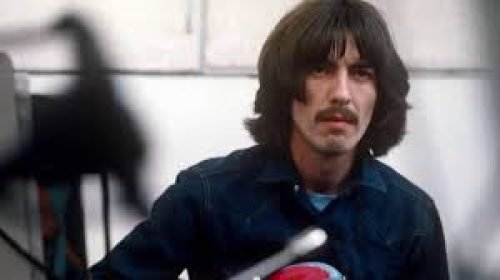In 1970, George Harrison, renowned as the “quiet Beatle,” emerged from the shadow of his former bandmates with the release of his first solo single, “My Sweet Lord.” The song, with its mesmerizing blend of spiritual longing and catchy melody, quickly climbed the charts and became an anthem of the era. However, beneath its surface of serene devotion lay a brewing storm of legal controversy that would challenge the very foundations of artistic originality.
The plagiarism controversy surrounding “My Sweet Lord” centers on its striking resemblance to The Chiffons’ 1963 hit “He’s So Fine.” Almost immediately after the song’s release, listeners and critics noted the similarities, sparking debates over whether Harrison had intentionally borrowed from the earlier tune or if the likeness was a mere coincidence. This dispute culminated in a high-profile lawsuit, where the lines between inspiration and infringement were scrutinized in a court of law.
This discussion is significant in music history for several reasons. Firstly, it highlights the intricate and often ambiguous nature of musical creativity, where influences can blur the boundaries between homage and imitation. Secondly, it underscores the legal and ethical challenges artists face in protecting their work while fostering a culture of creative freedom. Lastly, the case of “My Sweet Lord” versus “He’s So Fine” remains a pivotal moment in the ongoing dialogue about originality in music, serving as a cautionary tale and a topic of fascination for musicians, legal experts, and fans alike.
The Allegation: Similarities to “He’s So Fine”
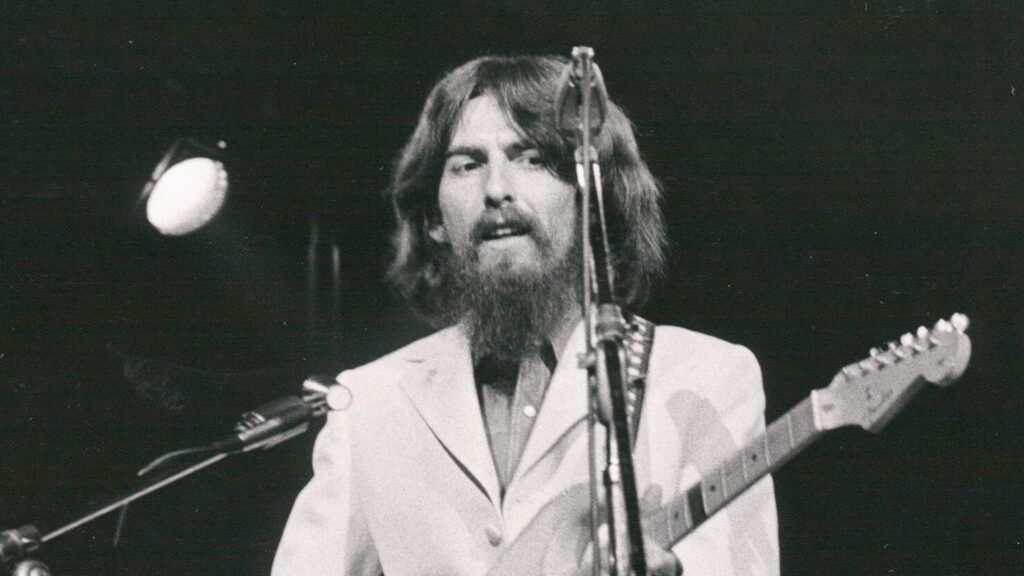
The heart of the controversy lies in the striking resemblance between George Harrison’s “My Sweet Lord” and The Chiffons’ 1963 hit “He’s So Fine.” Written by Ronald Mack and characterized by its catchy “doo-lang doo-lang doo-lang” refrain, “He’s So Fine” was a quintessential piece of 1960s girl group pop. The song enjoyed immense popularity, reaching the top of the charts and becoming a defining track of its time.
The Similarities
When “My Sweet Lord” was released in 1970, many listeners couldn’t help but notice the similarities. At the core of the comparison are the melodies, which share a remarkably similar pattern. Both songs employ a descending three-note motif that is instantly recognizable. In “He’s So Fine,” this motif is prominently featured in the verses, creating a hook that is both simple and memorable. “My Sweet Lord,” on the other hand, uses a similar descending sequence in its chorus, where the words “My sweet Lord” align closely with the notes in “He’s So Fine.”
Chord-wise, both songs utilize similar progressions that underpin their melodies. “He’s So Fine” follows a straightforward I-V-vi-IV (C-G-Am-F) progression in its verses, while “My Sweet Lord” mirrors this with its own I-V-vi-IV structure in the chorus. This harmonic similarity, while common in pop music, further fueled the allegations of copying.
Lyrically, while the themes of the two songs diverge—one being a pop love song and the other a spiritual anthem—the structure of the lyrics in terms of syllable count and rhythmic placement shows notable parallels. For instance, the phrasing of “He’s So Fine” and “My Sweet Lord” exhibits a similar cadence and stress pattern, which contributed to the perception that the latter had borrowed heavily from the former.
Specific points of contention centered on the musical and structural elements. The descending motif and chord progression were key aspects scrutinized during the legal proceedings. Musicologists and experts dissected these elements to determine whether Harrison had subconsciously copied “He’s So Fine” or if the similarities were simply a result of common musical conventions. The case ultimately revolved around these nuanced details, as the court sought to untangle the threads of inspiration and originality in Harrison’s work.
The Legal Battle
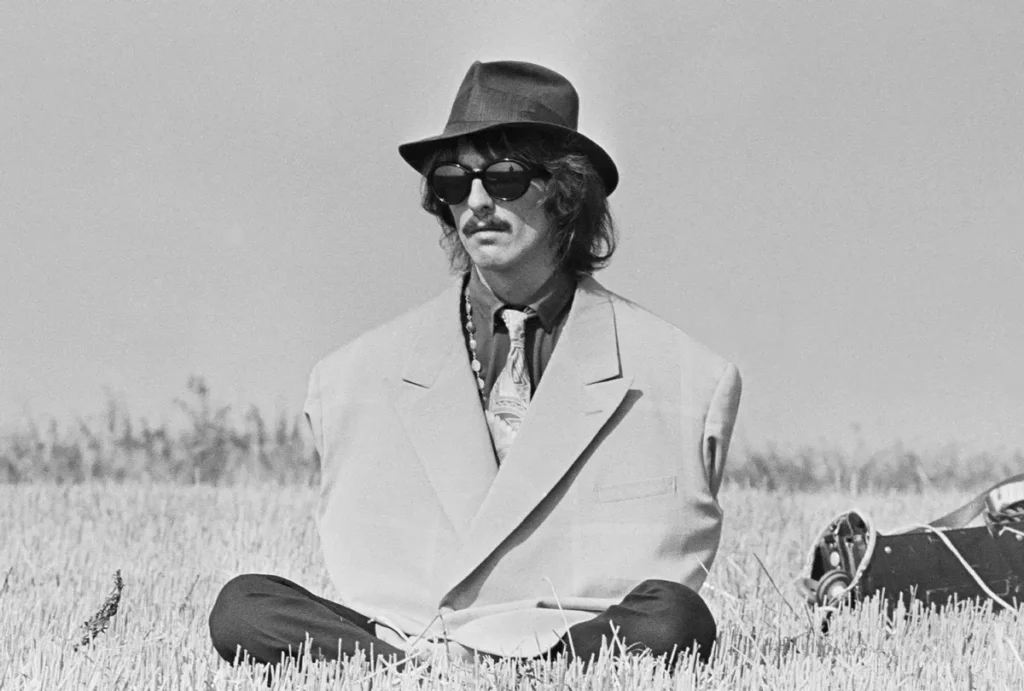
The plagiarism lawsuit over George Harrison’s “My Sweet Lord” began in 1971 when Bright Tunes Music Corporation, the owner of the rights to The Chiffons’ “He’s So Fine,” filed a suit against Harrison, alleging copyright infringement. This legal battle would stretch on for years, becoming one of the most notable cases in music history.
Overview of the Plagiarism Lawsuit
Bright Tunes claimed that Harrison had copied key elements of “He’s So Fine,” including its melody and chord progression. They sought financial compensation for the alleged infringement, asserting that “My Sweet Lord” had directly benefited from the success of “He’s So Fine.” The case went to trial in 1976, with both sides presenting their arguments and evidence in a court of law.
Key Arguments from Both Sides
The plaintiff, Bright Tunes, argued that the similarities between “My Sweet Lord” and “He’s So Fine” were too substantial to be coincidental. They pointed to the identical descending three-note motif and the similar chord progressions as clear indicators of copying. Their case rested on the notion that these elements were distinctive enough to constitute a violation of copyright.
Harrison’s defense acknowledged the similarities but maintained that any resemblance was unintentional and that “My Sweet Lord” had been independently composed. Harrison testified that he had been inspired by the music of the time, particularly gospel songs, and that he had no conscious awareness of borrowing from “He’s So Fine.” His defense argued that the similarities could be attributed to common musical structures and conventions rather than deliberate plagiarism.
The Role of the Music Expert Witnesses
Music experts played a crucial role in the trial, providing detailed analyses of both songs. They dissected the melodies, harmonies, and rhythms, comparing the two pieces note by note. These expert testimonies were pivotal in breaking down the technical aspects of the music to help the court understand the extent of the similarities.
One of the key expert witnesses for the plaintiff was musicologist Harold Barlow, who emphasized the identical musical phrases and chord sequences. On the defense side, musicologist Stanley Greenberg highlighted the differences and argued that the similarities were within the bounds of musical norms and traditions.
Outcome of the Trial and Its Implications
In 1976, Judge Richard Owen ruled in favor of Bright Tunes, stating that Harrison had “subconsciously plagiarized” “He’s So Fine.” The court acknowledged that Harrison had not intentionally copied the song, but the similarities were too significant to ignore. As a result, Harrison was found liable for infringement and ordered to pay damages. The amount was eventually settled in 1981 for $587,000.
The outcome of the trial had profound implications for the music industry. It underscored the importance of originality in songwriting and set a precedent for how cases of musical plagiarism would be judged in the future. The concept of “subconscious plagiarism” became a recognized legal principle, highlighting the fine line artists must navigate between inspiration and infringement. For Harrison, the case was a sobering reminder of the complexities of creativity and copyright, shaping his approach to music in the years that followed.
George Harrison’s Perspective
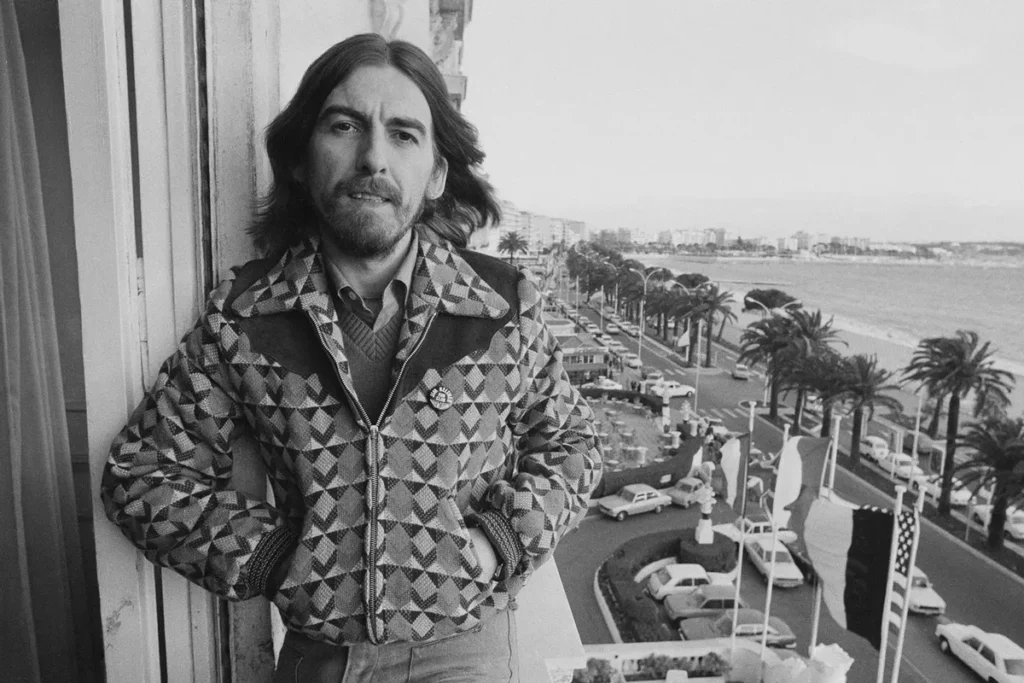
George Harrison’s response to the plagiarism allegations was a mix of bewilderment and candid acknowledgment of the complexities involved in songwriting. From the outset, Harrison maintained that any similarities between “My Sweet Lord” and “He’s So Fine” were purely accidental and that he had not intentionally copied the earlier song.
Harrison’s Response to the Allegations
Harrison expressed surprise at the lawsuit, initially dismissing the claims as unfounded. He explained that “My Sweet Lord” was inspired by his deepening spiritual journey and his desire to blend elements of gospel music with his own pop sensibilities. Harrison consistently stated that his primary influence for the song was the Edwin Hawkins Singers’ “Oh Happy Day,” rather than The Chiffons’ hit.
Statements from Interviews and His Autobiography
In various interviews and his 1976 autobiography, “I Me Mine,” Harrison elaborated on his thoughts about the lawsuit and its outcome. He described the experience as frustrating and disheartening, feeling that the legal system had unfairly targeted him. He wrote:
“I wasn’t consciously aware of the similarity when I wrote the song,” Harrison said. “But once it started to get a lot of airplay, people started talking about it, and it was then I thought, ‘Why didn’t I realize? ‘ It would have been very easy to change a note here or there and not affect the feeling of the record.”
Harrison’s reflections conveyed a sense of resignation to the verdict while emphasizing his genuine intentions. He admitted to feeling somewhat embarrassed by the oversight but remained firm in his belief that his creative process was honest and rooted in a different musical tradition.
Analysis of His Intent and Creative Process
Examining Harrison’s intent and creative process reveals a nuanced picture of how “My Sweet Lord” came to be. Harrison was deeply influenced by his exploration of Eastern spirituality and his desire to express these themes through music. The song’s mantra-like repetition of “Hallelujah” and “Hare Krishna” reflected his devotion and spiritual awakening.
Harrison’s creative process often involved blending different musical influences. His admiration for gospel music, particularly the uplifting and repetitive nature of songs like “Oh Happy Day,” played a significant role in shaping “My Sweet Lord.” This approach was typical of Harrison’s work, as he frequently drew from various genres and cultural sources to create his unique sound.
The concept of “subconscious plagiarism” introduced in the trial acknowledges the possibility that artists can unknowingly absorb and replicate elements of other works. In Harrison’s case, it’s plausible that he had internalized the melody of “He’s So Fine” without realizing it. This unconscious absorption, combined with his intentional homage to gospel music, likely contributed to the unintentional similarities.
Cultural and Musical Context
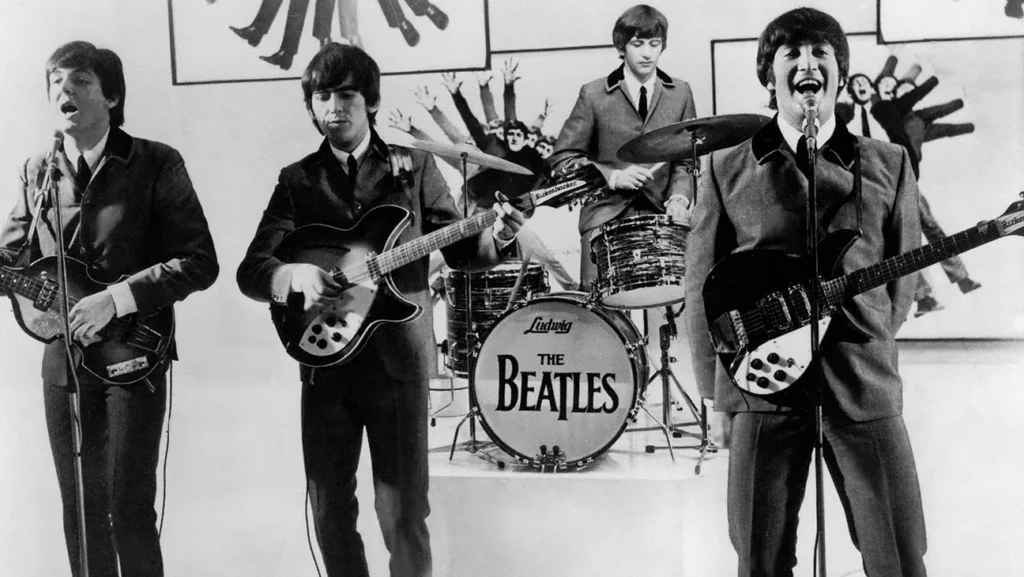
The 1960s and 1970s were a vibrant period for music, characterized by an explosion of creativity and experimentation. During these decades, the boundaries between genres were often blurred, and artists regularly drew inspiration from a wide array of sources. Understanding the common practices of musical borrowing and influence in this era provides essential context for the controversy surrounding George Harrison’s “My Sweet Lord.”
Common Practices of Musical Borrowing and Influence in the 1960s and 1970s
Musical borrowing has been a longstanding tradition, with artists building upon existing works to create something new. In the 1960s and 1970s, this practice was particularly prevalent as musicians sought to innovate and cross-pollinate different styles. The Beatles, for instance, were known for their eclectic influences, ranging from classical and Indian music to American rock ‘n’ roll and rhythm and blues.
Artists often borrowed melodies, chord progressions, and rhythms, viewing these elements as part of a shared musical language. The concept of “quoting” or “referencing” other songs was seen as a way to pay homage to predecessors and contemporaries. This practice was generally accepted and even celebrated within the artistic community, as long as the new work brought a fresh perspective or unique twist to the borrowed elements.
Other Notable Cases of Musical Similarities and Plagiarism in History
The history of popular music is dotted with cases of similarities and allegations of plagiarism. Some notable examples include:
Led Zeppelin’s “Stairway to Heaven” vs. Spirit’s “Taurus”: Led Zeppelin faced accusations that the iconic opening riff of “Stairway to Heaven” was lifted from Spirit’s instrumental track “Taurus.” The case went to trial in 2016, with Led Zeppelin ultimately prevailing.
The Beach Boys’ “Surfin’ U.S.A.” vs. Chuck Berry’s “Sweet Little Sixteen”: The Beach Boys’ hit bore such a strong resemblance to Berry’s classic that Berry’s lawyers quickly intervened. As a result, Berry received songwriting credit and royalties.
Sam Smith’s “Stay With Me” vs. Tom Petty’s “I Won’t Back Down”: In 2014, similarities between these songs led to an amicable settlement, with Petty and co-writer Jeff Lynne receiving a percentage of royalties and songwriting credits.
These cases illustrate the ongoing debate over the boundaries of musical influence and originality, highlighting how common motifs and structures can lead to legal disputes.
The Fine Line Between Inspiration and Plagiarism
Distinguishing between inspiration and plagiarism can be challenging. Inspiration involves drawing upon existing works to spark new ideas, whereas plagiarism implies the unauthorized copying of substantial elements without proper acknowledgment. The fine line between the two often hinges on intent, the extent of the similarities, and the originality of the new work.
Musical elements such as chord progressions, rhythms, and even certain melodic phrases are often reused across genres and eras. These components can be seen as part of the shared toolbox of musicians. However, when a new work too closely mirrors the distinct and recognizable elements of an earlier piece, it crosses into the realm of plagiarism.
In Harrison’s case, the court introduced the notion of “subconscious plagiarism,” acknowledging that an artist could unintentionally replicate another’s work. This concept recognizes the complex and often subconscious nature of creativity, where an artist’s influences can resurface in unexpected ways.
Analysis: Did He Really Steal It?
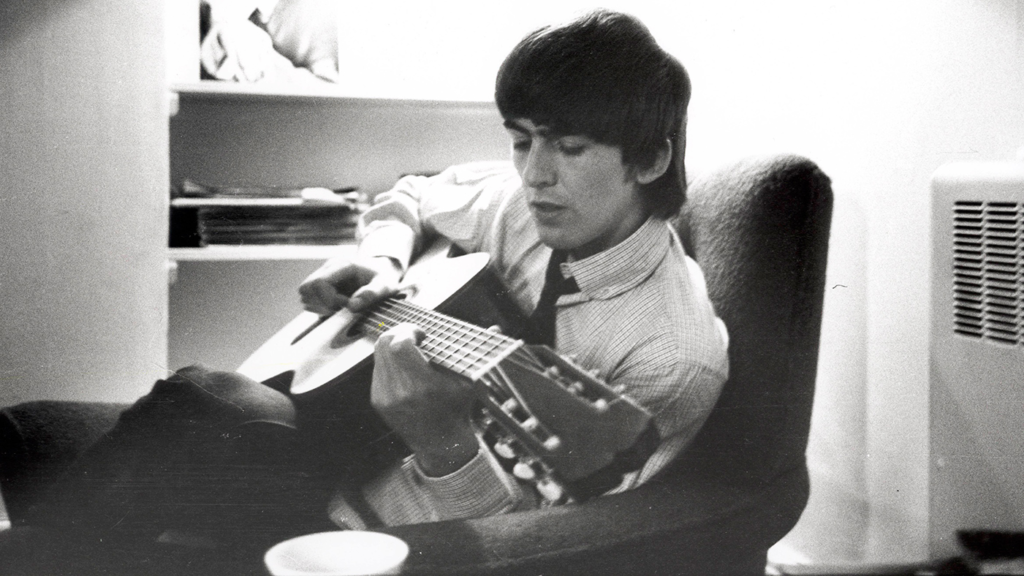
The question of whether George Harrison truly stole “My Sweet Lord” from The Chiffons’ “He’s So Fine” is a nuanced one, rooted in an examination of the evidence and arguments presented during the legal battle, as well as the broader context of subconscious influence versus deliberate copying.
Examination of the Evidence and Arguments
The evidence presented in court focused primarily on the musical similarities between “My Sweet Lord” and “He’s So Fine.” Key points of contention included:
Melodic Similarities: Both songs feature a distinctive descending three-note motif. This motif is central to the chorus of “My Sweet Lord” and the verses of “He’s So Fine,” making it a critical point of comparison. The court found that this similarity was significant enough to warrant further scrutiny.
Chord Progressions: The harmonic structure of both songs shares notable parallels. “He’s So Fine” employs a straightforward I-V-vi-IV progression, which is mirrored in “My Sweet Lord.” This commonality in chord progressions contributed to the perception that Harrison’s song closely mirrored the earlier hit.
Lyrical Structure: While the lyrics of the two songs differ thematically, their rhythmic and syllabic patterns exhibit similarities. The phrasing and cadence of the lyrics in “My Sweet Lord” align closely with those in “He’s So Fine,” furthering the argument of substantial similarity.
During the trial, musicologists from both sides dissected these elements in great detail. Bright Tunes’ experts argued that the similarities were too pronounced to be coincidental, suggesting that Harrison had copied the song. Harrison’s defense, however, maintained that any resemblance was unintended and rooted in common musical conventions.
Possible Subconscious Influence vs. Deliberate Copying
One of the most compelling aspects of the case was the court’s introduction of the concept of “subconscious plagiarism.” This notion acknowledges that artists can unconsciously absorb and replicate elements of other works without intending to do so. In Harrison’s case, the court concluded that he had likely internalized “He’s So Fine” and reproduced its key elements subconsciously.
Subconscious Influence: Harrison himself admitted that he was unaware of the similarities when he composed “My Sweet Lord.” His primary influence, he claimed, was gospel music, particularly the uplifting style of the Edwin Hawkins Singers’ “Oh Happy Day.” This admission aligns with the idea that Harrison’s creative process involved a blend of various musical inspirations, some of which he might not have consciously recognized.
Subconscious influence is a common phenomenon in the arts. Musicians, like all artists, are often influenced by the vast array of sounds they encounter. These influences can resurface in their work, sometimes without conscious recognition. Harrison’s extensive exposure to different musical styles, including the pop hits of the 1960s, likely played a role in shaping “My Sweet Lord.”
Deliberate Copying: The argument for deliberate copying would require evidence that Harrison intentionally set out to replicate “He’s So Fine.” However, there is little to suggest this was the case. Harrison had no apparent motive to copy the song deliberately, and his consistent claims of unintentional similarity support the idea of subconscious influence. Furthermore, Harrison’s creative process was known for its eclecticism and innovation, making deliberate copying seem out of character.
Closing Thoughts
While the court ultimately ruled that Harrison had subconsciously plagiarized “He’s So Fine,” the case remains a complex and debated issue in music history. The evidence suggests that Harrison did not deliberately copy the song, but rather, the similarities arose from an intricate blend of musical influences and subconscious absorption. This distinction is crucial, as it underscores the challenges artists face in navigating the fine line between inspiration and originality.
The “My Sweet Lord” controversy serves as a reminder of the intricate and often subconscious nature of creativity. It highlights the importance of understanding the broader context of musical borrowing and influence, and it raises important questions about how we define and protect originality in the arts. For Harrison, the case was a sobering lesson in the complexities of songwriting and the unforeseen consequences of subconscious inspiration.
